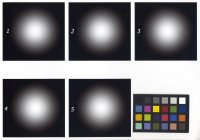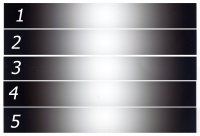RogerB
Print Addict
- Joined
- Sep 27, 2010
- Messages
- 293
- Reaction score
- 316
- Points
- 183
- Location
- S.E. England
- Printer Model
- Epson Pro3880
As mikling says, this is a tough test for any printer, especially one with only a single black. If the actual print matches the Gamutvision simulation then your primary profile may be quite acceptable. You've said yourself that it's downhill after that, and I wouldn't be too happy with the later iterations. Time to make a few prints and do a subjective evaluation I think. I can say that it's definitely possible to make reasonable B&W prints with the "9000-type" printer. Many years ago I had an S9000 (grandad to your Pro 9000 II) and with my own custom profiles my B&W prints were good enough to compete in camera club competitions.
As for evaluating the colour quality, a good start is the Macbeth Colorchecker. All the colours should be in-gamut and even a visual comparison with the real thing will give you a good idea of the accuracy. You can of course measure the printed colours with your Colormunki, but I think you would have to use Argyll for that. For a subjective test of profile "smoothness" the Grainger rainbow is always good. Very unforgiving of nasty colour transitions. Time to move into the subjective realm I fear.
As for evaluating the colour quality, a good start is the Macbeth Colorchecker. All the colours should be in-gamut and even a visual comparison with the real thing will give you a good idea of the accuracy. You can of course measure the printed colours with your Colormunki, but I think you would have to use Argyll for that. For a subjective test of profile "smoothness" the Grainger rainbow is always good. Very unforgiving of nasty colour transitions. Time to move into the subjective realm I fear.



